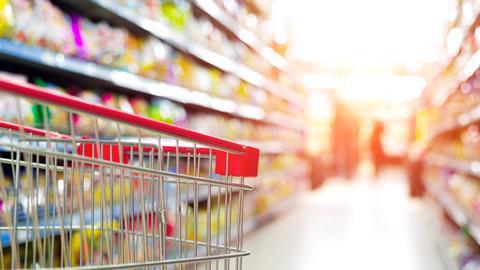Kantar figures indicate inflation may have peaked, but prices remain historically high
Grocery price inflation has fallen slightly, but is still at one of the highest levels seen in the past 15 years.
The latest figures from Kantar show that like-for-like grocery price inflation has fallen for the second month in a row and now sits at 17.2 per cent for the four weeks to 14 May 2023. Take-home grocery sales rose by 10.8 per cent over the month in comparison with the same period last year.
“The drop in grocery price inflation, which is down by 0.1 percentage points on last month’s figure, is without doubt welcome news for shoppers but it is still incredibly high – 17.2 per cent is the third-fastest rate of grocery inflation we’ve seen since 2008,” said Fraser McKevitt, head of retail and consumer insight at Kantar. ”This could add an extra £833 to the average household’s annual grocery bill if consumers don’t shop in different ways.”
Shoppers have been switching to own-label goods, sales of which have seen a 15.2 per cent uplift in the last month, almost double the 8.3 per cent seen in branded goods. However loyalty discounts are helping narrow the gap in most stores.
Coronation boost
Despite price pressures, people took the opportunity to make the most of the additional bank holiday this month with celebrations for the King’s coronation. Grocery sales soared by 16 per cent during the week of the coronation, adding up to an extra £218 million passing through the tills.
Alcohol was one of the big beneficiaries, along with pastry and cream, though frozen broad beans also saw a 57 per cent jump.
Waitrose benefited from a substantial uplift in the week of the coronation, with sales up by 4.8 per cent over the 12 weeks, the highest rate of growth the retailer has achieved since April 2021.
Discounters continue to grow
Aldi was the fastest-growing grocer this month, with sales up by 24 per cent, while Lidl’s sales increased by 23.2 per cent. The two discounters now account for 17.8 per cent of the market, with Aldi’s share at 10.1 per cent and Lidl at 7.7 per cent.
Asda grew by 10.6 per cent and its market share now stands at 13.9 per cent, a rise of 0.1 percentage points when compared to the same 12 weeks last year. Sales were boosted by its Just Essentials range.
Sales increased by 8.9 per cent for Britain’s largest supermarket, Tesco, with growth across its convenience stores, large format supermarket and online channels. It now holds 27.1 per cent of the market.




